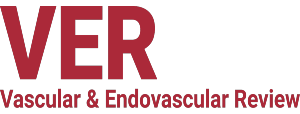VOLUME 6, 2023
The Role of Targeted Infra-popliteal Endovascular Angioplasty to Treat Diabetic Foot Ulcers Using the Angiosome Model: A Systematic Review
VOLUME 6, 2023
Current Trends in Vascular Imaging Modalities; Implications For Diagnosis And Treatment
Rashid Latif Medical College, Lahore, Pakistan.
Abstract
The aim of research determine that current trends related to the vascular imaging modalities. The creation of 3D and 4D imaging is one of the most significant advances in ultrasound technology. These methods give a three-dimensional image of the body, allowing for a more thorough assessment of organs and tissues. Doctors can see structures from every aspect with 3D and 4D imaging, allowing them to discover anomalies that standard 2D ultrasound may have missed. For measuring the research study used theoratical data analysis between them. This improves not just diagnostic accuracy but also patient care by allowing doctors to deliver more tailored therapy. The miniaturization of ultrasound instruments is another key breakthrough. Ultrasound machines were once huge and heavy, restricting their usage to hospitals and medical clinics. Doctors may now transport the technology right to the patient's bedside, due to the development of portable ultrasound machines. This has substantially enhanced access to ultrasound services, especially in isolated places or during emergencies. These portable imaging devices are lightweight, simple to use, and provide high-quality pictures, making them a useful tool for improving healthcare outcomes. The overall research founded that positive also significant implicated imaging modalities. The advancement of ultrasound technology has changed the face of healthcare. Ultrasound innovations have opened the path for better patient care, from the advent of 3D and 4D imaging to the miniaturization of instruments. Doctors can make more accurate diagnoses and design tailored treatment regimens using clearer and more comprehensive pictures. The availability of portable ultrasound machines has also broadened the technology's reach, ensuring that patients in all places have access to high-quality treatment.
Lecture in accounting. University of Basrah, College of Administration and Economics, Department of Accounting.
Lecture in accounting. University of Basrah, College of Administration and Economics, Department of Accounting.
